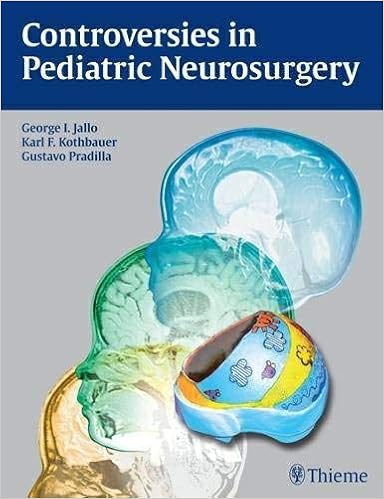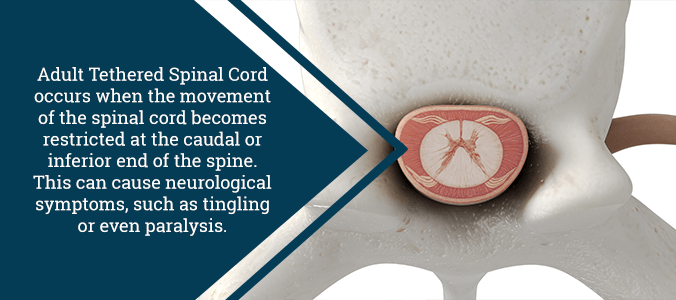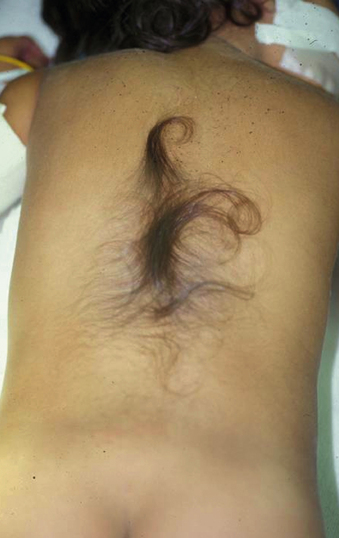Tethered cord surgery controversy
Home » » Tethered cord surgery controversyYour Tethered cord surgery controversy images are available in this site. Tethered cord surgery controversy are a topic that is being searched for and liked by netizens now. You can Find and Download the Tethered cord surgery controversy files here. Download all royalty-free vectors.
If you’re searching for tethered cord surgery controversy pictures information linked to the tethered cord surgery controversy interest, you have pay a visit to the right blog. Our site always provides you with suggestions for seeing the highest quality video and image content, please kindly search and locate more informative video articles and graphics that match your interests.
Tethered Cord Surgery Controversy. Tethered cord occurs when the spinal cord is attached to tissues around the spine most commonly at the base of the spine. Recently surgery has been offered to children who have a normally positioned conus medullaris and no terminal filum abnormality visible on 15-tesla magnetic resonance images referred to as minimal or occult tethered cord syndrome TCS. Controversy exists regarding proper indications for surgical lysis of the terminal filum in children with voiding dysfunction and tethered spinal cord. Recently surgery has been offered to children who have a normally positioned conus medullaris and no terminal filum abnormality visible on 15-tesla magnetic resonance images referred to as minimal or occult tethered cord syndrome TCS.
 Pdf Tethered Cord Syndrome In Adulthood From researchgate.net
Pdf Tethered Cord Syndrome In Adulthood From researchgate.net
Spinal cord tethering may be either primary or secondary. This is called detethering. I believe there is enough experimental evidence to suggest that the surgery should be prophylactic in tethered cord. Recently surgery has been offered to children who have a normally positioned conus medullaris and no terminal filum abnormality visible on 15-tesla magnetic resonance images referred to as minimal or occult tethered cord syndrome TCS. The neurological surgeon makes an incision in the lower back to expose the site where the spinal cord is pinned then frees it by releasing the stuck portion of the cord. The patient is kept flat on bed rest for 3 days to allow for dural healing and to put as little CSF pressure on the dura as possible during this time.
The patient is kept flat on bed rest for 3 days to allow for dural healing and to put as little CSF pressure on the dura as possible during this time.
The most common surgery for tethered cord involves cutting the anchoring tissue on the bottom called the filum terminale. There are apparently many patients with tethered cord who remain asymptomatic their entire life. Controversy exists regarding proper indications for surgical lysis of the terminal filum in children with voiding dysfunction and tethered spinal cord. Progress in resolving issues related to the myriad conditions that can masquerade as a tethered spinal cord will only come with better information from basic research and prospective clinical trials. Tethered spinal cord is often linked to spina bifida. Complications include infection bleeding and damage to the spinal cord which may result in paralysis or loss of bowel or bladder function.
 Source: amazon.com
Source: amazon.com
Recently surgery has been offered to children who have a normally positioned conus medullaris and no terminal filum abnormality visible on 15-tesla magnetic resonance images referred to as minimal or occult tethered cord syndrome TCS. Recovery From Surgery for Tethered Cord Syndrome With a Normally Positioned Conus in Children Postoperative Orders HOB positioning activity bathing. Controversy exists regarding proper indications for surgical lysis of the terminal filum in children with voiding dysfunction and tethered spinal cord. To evaluate the surgical treatment of tethered cord syndrome TCS a prospective analysis of 43 patients operated at Neurosurgery Department Zagazig University hospitals from May 2013 to January 2017 with 1 year follow-up had been done. More than 40 percent of children who have spina bifida will need surgery to untether the spinal cord during their lifetimes.
 Source: neupsykey.com
Source: neupsykey.com
The attached tissue limits the movement of the spinal cord within the spinal column and causes an abnormal stretching of the spinal cord and. This is called detethering. The attached tissue limits the movement of the spinal cord within the spinal column and causes an abnormal stretching of the spinal cord and. Progress in resolving issues related to the myriad conditions that can masquerade as a tethered spinal cord will only come with better information from basic research and prospective clinical trials. Spinal cord tethering may be either primary or secondary.

One such area of controversy regards the diagnosis of Tethered Cord Syndrome. The neurological surgeon makes an incision in the lower back to expose the site where the spinal cord is pinned then frees it by releasing the stuck portion of the cord. The attached tissue limits the movement of the spinal cord within the spinal column and causes an abnormal stretching of the spinal cord. There are apparently many patients with tethered cord who remain asymptomatic their entire life. Some have suggested documenting clear neurologic deficits before proceeding with surgery.
 Source: onlinelibrary.wiley.com
Source: onlinelibrary.wiley.com
One such area of controversy regards the diagnosis of Tethered Cord Syndrome. There are apparently many patients with tethered cord who remain asymptomatic their entire life. The most common surgery for tethered cord involves cutting the anchoring tissue on the bottom called the filum terminale. Tethered cord is a relatively new entity medically speaking and as such there is still quite a bit of controversy surrounding it. I believe there is enough experimental evidence to suggest that the surgery should be prophylactic in tethered cord.

Progress in resolving issues related to the myriad conditions that can masquerade as a tethered spinal cord will only come with better information from basic research and prospective clinical trials. One such area of controversy regards the diagnosis of Tethered Cord Syndrome. Recovery From Surgery for Tethered Cord Syndrome With a Normally Positioned Conus in Children Postoperative Orders HOB positioning activity bathing. The tethered spinal cord syndrome remains a fascinating surgical enigma surrounded by much debate controversy and uncertainty. Recently surgery has been offered to children who have a normally positioned conus medullaris and no terminal filum abnormality visible on 15-tesla magnetic resonance images referred to as minimal or occult tethered cord syndrome TCS.
 Source: researchgate.net
Source: researchgate.net
Controversy exists regarding proper indications for surgical lysis of the terminal filum in children with voiding dysfunction and tethered spinal cord. Recently surgery has been offered to children who have a normally positioned conus medullaris and no terminal filum abnormality visible on 15-tesla magnetic resonance images referred to as minimal or occult tethered cord syndrome TCS. Surgery for tethered cord is another area of controversy that was not well addressed in this paper. Tethered cord occurs when the spinal cord is attached to tissues around the spine most commonly at the base of the spine. The attached tissue limits the movement of the spinal cord within the spinal column and causes an abnormal stretching of the spinal cord and.
 Source: jasonlowensteinmd.com
Source: jasonlowensteinmd.com
The most common surgery for tethered cord involves cutting the anchoring tissue on the bottom called the filum terminale. Tethered cord occurs when the spinal cord is attached to tissues around the spine most commonly at the base of the spine. Some have suggested documenting clear neurologic deficits before proceeding with surgery. Recovery From Surgery for Tethered Cord Syndrome With a Normally Positioned Conus in Children Postoperative Orders HOB positioning activity bathing. In most of those cases the spinal cord is tethered to the tough membrane called the dura which covers the spinal cord.
 Source: thejns.org
Source: thejns.org
Surgery for Tethered Cord. The most common surgery for tethered cord involves cutting the anchoring tissue on the bottom called the filum terminale. Controversy exists regarding proper indications for surgical lysis of the terminal filum in children with voiding dysfunction and tethered spinal cord. Primary is typically a form of OSD while secondary usually occurs following a myelomeningocele repair or other type of spinal cord surgery History and Exam Tethered spinal cord is most commonly diagnosed in infancy by the discovery of a abnormality noticed on the skin of the back. Spinal cord tethering may be either primary or secondary.
 Source: sciencedirect.com
Source: sciencedirect.com
Progress in resolving issues related to the myriad conditions that can masquerade as a tethered spinal cord will only come with better information from basic research and prospective clinical trials. The attached tissue limits the movement of the spinal cord within the spinal column and causes an abnormal stretching of the spinal cord and. The attached tissue limits the movement of the spinal cord within the spinal column and causes an abnormal stretching of the spinal cord. Recently surgery has been offered to children who have a normally positioned conus medullaris and no terminal filum abnormality visible on 15-tesla magnetic resonance images referred to as minimal or occult tethered cord syndrome TCS. Controversy exists regarding proper indications for surgical lysis of the terminal filum in children with voiding dysfunction and tethered spinal cord.
 Source: researchgate.net
Source: researchgate.net
Microscopic surgery is of value for patients suffering tethered cord syndrome with low risk of complications. There are apparently many patients with tethered cord who remain asymptomatic their entire life. The neurological surgeon makes an incision in the lower back to expose the site where the spinal cord is pinned then frees it by releasing the stuck portion of the cord. In most of those cases the spinal cord is tethered to the tough membrane called the dura which covers the spinal cord. Surgery for tethered cord is another area of controversy that was not well addressed in this paper.
 Source: onlinelibrary.wiley.com
Source: onlinelibrary.wiley.com
Tethered cord is a relatively new entity medically speaking and as such there is still quite a bit of controversy surrounding it. I believe there is enough experimental evidence to suggest that the surgery should be prophylactic in tethered cord. The most common surgery for tethered cord involves cutting the anchoring tissue on the bottom called the filum terminale. Other causes of tethered cord syndrome include. Progress in resolving issues related to the myriad conditions that can masquerade as a tethered spinal cord will only come with better information from basic research and prospective clinical trials.
 Source: onlinelibrary.wiley.com
Source: onlinelibrary.wiley.com
The neurological surgeon makes an incision in the lower back to expose the site where the spinal cord is pinned then frees it by releasing the stuck portion of the cord. Often when neurologic deterioration has occurred it is impossible to reverse. Recently surgery has been offered to children who have a normally positioned conus medullaris and no terminal filum abnormality visible on 15-tesla magnetic resonance images referred to as minimal or occult tethered cord syndrome TCS. Tethered spinal cord is often linked to spina bifida. Most of the damage to the distal cord is caused by extension flexion injury particularly as the young child grows.
 Source: researchgate.net
Source: researchgate.net
Other causes of tethered cord syndrome include. The patient is kept flat on bed rest for 3 days to allow for dural healing and to put as little CSF pressure on the dura as possible during this time. Complications include infection bleeding and damage to the spinal cord which may result in paralysis or loss of bowel or bladder function. Controversy exists regarding proper indications for surgical lysis of the terminal filum in children with voiding dysfunction and tethered spinal cord. The most common treatment for tethered spinal cord is a lumbar laminectomy to release the tethered cord.

In most of those cases the spinal cord is tethered to the tough membrane called the dura which covers the spinal cord. Recently surgery has been offered to children who have a normally positioned conus medullaris and no terminal filum abnormality visible on 15-tesla magnetic resonance images referred to as minimal or occult tethered cord syndrome TCS. Tethered spinal cord is often linked to spina bifida. The most common surgery for tethered cord involves cutting the anchoring tissue on the bottom called the filum terminale. Often when neurologic deterioration has occurred it is impossible to reverse.
 Source: onlinelibrary.wiley.com
Source: onlinelibrary.wiley.com
One such area of controversy regards the diagnosis of Tethered Cord Syndrome. The tethered spinal cord syndrome remains a fascinating surgical enigma surrounded by much debate controversy and uncertainty. Tethered cord occurs when the spinal cord is attached to tissues around the spine most commonly at the base of the spine. To evaluate the surgical treatment of tethered cord syndrome TCS a prospective analysis of 43 patients operated at Neurosurgery Department Zagazig University hospitals from May 2013 to January 2017 with 1 year follow-up had been done. Spinal cord tethering may be either primary or secondary.

For this procedure the patient is placed under general anesthesia. One such area of controversy regards the diagnosis of Tethered Cord Syndrome. In most of those cases the spinal cord is tethered to the tough membrane called the dura which covers the spinal cord. The attached tissue limits the movement of the spinal cord within the spinal column and causes an abnormal stretching of the spinal cord. Often when neurologic deterioration has occurred it is impossible to reverse.
 Source: clinicalgate.com
Source: clinicalgate.com
In most of those cases the spinal cord is tethered to the tough membrane called the dura which covers the spinal cord. Tethered cord is a relatively new entity medically speaking and as such there is still quite a bit of controversy surrounding it. The tethered spinal cord syndrome remains a fascinating surgical enigma surrounded by much debate controversy and uncertainty. The attached tissue limits the movement of the spinal cord within the spinal column and causes an abnormal stretching of the spinal cord and. Recently surgery has been offered to children who have a normally positioned conus medullaris and no terminal filum abnormality visible on 15-tesla magnetic resonance images referred to as minimal or occult tethered cord syndrome TCS.

The attached tissue limits the movement of the spinal cord within the spinal column and causes an abnormal stretching of the spinal cord and. I believe there is enough experimental evidence to suggest that the surgery should be prophylactic in tethered cord. Recently surgery has been offered to children who have a normally positioned conus medullaris and no terminal filum abnormality visible on 15-tesla magnetic resonance images referred to as minimal or occult tethered cord syndrome TCS. Microscopic surgery is of value for patients suffering tethered cord syndrome with low risk of complications. Tethered cord is a relatively new entity medically speaking and as such there is still quite a bit of controversy surrounding it.
This site is an open community for users to do submittion their favorite wallpapers on the internet, all images or pictures in this website are for personal wallpaper use only, it is stricly prohibited to use this wallpaper for commercial purposes, if you are the author and find this image is shared without your permission, please kindly raise a DMCA report to Us.
If you find this site value, please support us by sharing this posts to your favorite social media accounts like Facebook, Instagram and so on or you can also save this blog page with the title tethered cord surgery controversy by using Ctrl + D for devices a laptop with a Windows operating system or Command + D for laptops with an Apple operating system. If you use a smartphone, you can also use the drawer menu of the browser you are using. Whether it’s a Windows, Mac, iOS or Android operating system, you will still be able to bookmark this website.